Read Part 1, Part 2, Part 3 and Part 4
Jungian Analysis and the Path to Wholeness
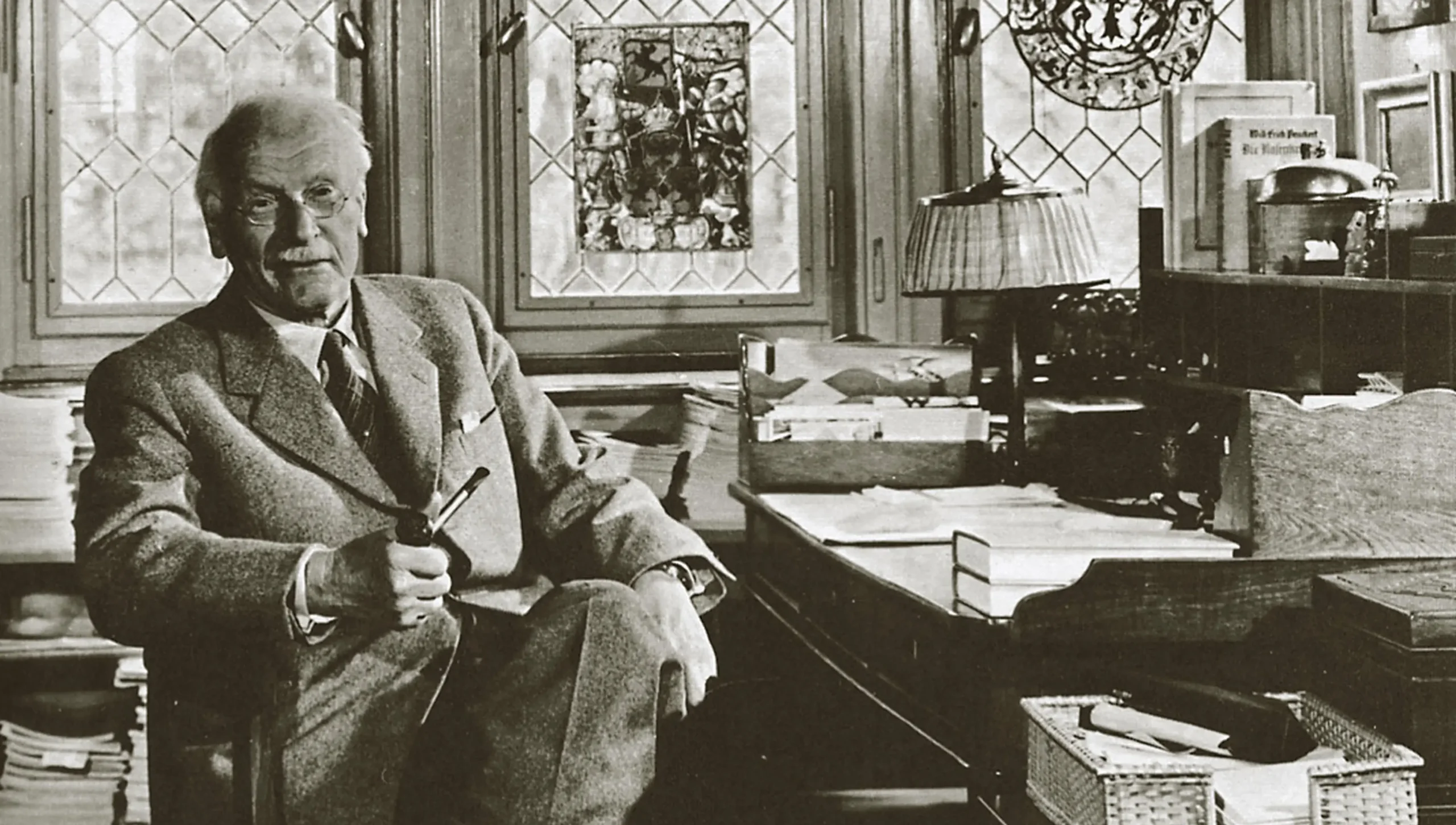
Read More on Jung here:
Key Ideas and Main Points:
- Jung’s concept of individuation as a lifelong process of psychological maturation and self-realization.
- The importance of integrating conscious and unconscious aspects of the psyche.
- The role of dreams and symbols in bridging conscious and unconscious minds.
- The spiritual dimension of individuation and its connection to the Self.
- The concept of the collective unconscious and archetypal patterns.
- The dangers of ego dissolution and the importance of a strong ego in spiritual development.
- The need for discernment between genuine spiritual experiences and psychopathology.
- The integration of psychology and spirituality in Jung’s approach.
- The idea of the anima mundi or world soul and the interconnectedness of psyche and nature.
- Jung’s three stages of consciousness: mythological, scientific, and post-secular/integral.
- The chthonic dimension of the psyche and its importance in depth psychology.
- The implications of Jung’s work for ecological awareness and embodied spirituality.
- The concept of the post-secular sacred and the re-engagement with numinous dimensions of reality.
- The role of the therapist in supporting spiritual growth and discernment.
- The importance of balancing rational thought with intuition and imagination in the healing process.
How does Jungian Analysis Work?
In a world that often feels fragmented, superficial, and devoid of deeper meaning, many people are turning to the rich and transformative tradition of Jungian analysis as a path to healing, growth, and self-discovery. Founded by the Swiss psychiatrist Carl Jung in the early 20th century, Jungian analysis is a depth psychology that seeks to explore the unconscious dimensions of the psyche, uncover the hidden patterns and potentials that shape our lives, and ultimately facilitate the process of individuation – the lifelong journey towards wholeness and authenticity.
At its core, Jungian analysis is a collaborative, experiential, and deeply personal process that unfolds over time between analyst and analysand (the person undergoing analysis). Through the exploration of dreams, fantasies, creative expressions, and the challenges and opportunities of everyday life, the analysand begins to confront the shadow aspects of their psyche – the repressed, rejected or undeveloped parts of themselves that often manifest as symptoms, conflicts, and limiting patterns of behavior.
By bringing these unconscious elements into conscious awareness, the analysand can begin to integrate them in a more balanced and constructive way. This often involves a confrontation with the persona – the social mask or role that we present to the world – and a discovery of the deeper, more authentic self that lies beneath. It also typically includes an exploration of the analysand’s family of origin and early life experiences, as these often hold keys to understanding the underlying dynamics and complexes that shape their adult personality.
As the analysis progresses, the analysand may also begin to encounter the archetypal dimensions of their psyche – the universal patterns and symbols that underlie all human experience. These may manifest through dreams, myths, fairy tales, or religious and spiritual traditions, and can provide profound insights into the larger story and meaning of one’s life journey.
The ultimate goal of Jungian analysis is not just symptom relief or problem-solving (although these are often important byproducts), but a fundamental transformation of the personality towards greater wholeness, creativity, and self-realization. This process is not always easy or comfortable – it demands a willingness to confront one’s deepest fears, wounds, and limitations, and to take responsibility for one’s own growth and individuation. But for those who are willing to undertake this hero’s journey, the rewards can be immeasurable – a life of greater depth, meaning, and authentic expression.
One of the unique strengths of Jungian analysis is its emphasis on the symbolic and imaginative dimensions of the psyche. Unlike more cognitive or behavioral approaches that focus primarily on conscious thoughts and actions, Jungian analysis recognizes the profound wisdom and transformative power of the unconscious mind. By learning to engage with the language of dreams, symbols, and archetypes, the analysand can tap into a deeper source of guidance and creativity, one that often transcends the limitations of rational understanding.
Another distinctive feature of Jungian analysis is its recognition of the spiritual and transpersonal dimensions of human experience. For Jung, the process of individuation was not just a psychological journey, but a fundamentally spiritual one – a quest for meaning, purpose, and connection to something greater than oneself. This may involve a exploration of the analysand’s religious or philosophical beliefs, as well as a cultivation of a more direct, experiential relationship with the numinous and the sacred.
While Jungian analysis shares some common goals with other forms of psychotherapy – such as increased self-awareness, emotional healing, and more satisfying relationships – it is distinguished by its depth, its holistic approach, and its emphasis on the transformative power of the unconscious. Rather than simply addressing specific problems or symptoms, Jungian analysis seeks to facilitate a fundamental shift in the analysand’s relationship to themselves, others, and the world around them.
This is not to say that Jungian analysis is always the best or only approach for everyone. For some people, more targeted or symptom-focused therapies may be more appropriate, especially in the short term. And Jungian analysis is not a quick fix or a panacea – it requires a significant commitment of time, energy, and resources, and is not always covered by insurance or available in all areas.
But for those who are drawn to the depth and richness of the Jungian tradition, the rewards can be profound and life-changing. By embarking on the journey of individuation, the analysand can begin to discover their own unique path to wholeness, to cultivate a more authentic and fulfilling life, and to contribute their gifts and energies to the larger world in a way that is deeply meaningful and purposeful.
Ultimately, Jungian analysis is a journey of the soul – a way of honoring the mystery, complexity, and potential of the human psyche, and of discovering the deeper story and meaning that underlies our individual and collective lives. It is a path that demands courage, compassion, and a willingness to step into the unknown – but for those who heed the call, it can be a source of profound transformation, healing, and grace.
Jungian Analysis in Context: Comparison to Other Therapeutic Approaches
Jungian analysis is a depth psychology that shares some common ground with other therapeutic traditions while also possessing its own unique perspectives and practices. Understanding these similarities and differences can help practitioners and potential analysands locate Jungian work within the broader field of psychotherapy and choose an approach aligned with their needs and values.
Similarities:
Like psychodynamic and psychoanalytic therapies, Jungian analysis recognizes the profound influence of unconscious processes, early life experiences, and recurring patterns on psychological well-being. All of these depth psychologies aim to bring unconscious material into conscious awareness in order to facilitate insight, emotional healing, and behavioral change.
Jungian therapy also shares with humanistic approaches like client-centered therapy an emphasis on the therapeutic relationship as a key agent of transformation. The analyst’s empathic attunement, unconditional positive regard, and “holding environment” are considered crucial to the change process.
In addition, Jungian analysis aligns with transpersonal and existential therapies in recognizing the spiritual dimensions of human experience and the innate drive toward meaning, creativity, and self-transcendence. Themes of authenticity, life purpose, and self-actualization are central to both Jungian and humanistic-existential approaches.
Differences:
While psychoanalysis and Jungian analysis both explore the unconscious, they differ in their views of its nature and role. Freud emphasized the personal unconscious and repressed instinctual drives, while Jung gave more weight to the collective unconscious and innate psychological structures like archetypes. Jungian dreamwork focuses on dreams as symbolic messages from the unconscious, in contrast to the wish-fulfillment model of classical psychoanalysis.
Jungian analysis also places more emphasis on the prospective and teleological aspects of the psyche compared to other analytic traditions. Rather than just uncovering the roots of pathology, Jungians trust in the psyche’s inherent wisdom and capacity for growth and individuation. The approach has a more philosophical, even spiritual flavor compared to the medical model of mainstream psychotherapy.
In addition, Jungian analysis typically unfolds over a longer term and with a less structured format than cognitive, behavioral, or solution-focused therapies. While it welcomes the resolution of symptoms, its primary aim is a larger transformation of the personality through a gradual, open-ended process of inner exploration. Dream interpretation, active imagination, and other symbolic methods are used more centrally than in most other therapies.
Finally, Jungian analysis remains a more esoteric and specialized field within the broader therapeutic landscape. Its abstract concepts, focus on symbolism, and calls for deep introspection may feel foreign or inaccessible for some clients who prefer more pragmatic or science-based approaches. Jungian analysts usually undergo a long apprenticeship that involves their own analysis, leading to a distinctive relational style and professional identity.
Ultimately, while Jungian analysis shares the goals of emotional healing, self-understanding, and positive change with other therapies, it pursues these through a unique depth psychological framework and a soulful method of inquiry into the conscious and unconscious mind. Its appeal lies in its integration of the personal and archetypal, the psychological and the sacred, in service of the lifelong journey of individuation.
The Role of the Analyst in Jungian Analysis
In Jungian analysis, the therapist serves as a guide and facilitator for the individuation process rather than an authoritative expert. The analyst helps the analysand (client) dive into the unconscious through tools like dream analysis and active imagination. However, it is the analysand’s own psyche that is the true “healer.” The analyst maintains a stance of not-knowing and walks alongside the analysand as mysteries of the unconscious unfold. A key task is to assist the ego in relating to unconscious contents without being overwhelmed by them.
The Psyche and its Structure
According to Jungian theory, the psyche is divided into three main components: the ego, the personal unconscious, and the collective unconscious.
The Ego:
This is the conscious mind, responsible for rational thinking, decision-making, and our sense of identity.
The Personal Unconscious:
This contains all the experiences, memories, and emotions that are not currently in conscious awareness but are unique to each individual.
The Collective Unconscious:
This is the deepest level of the unconscious mind, containing inherited ancestral memories and archetypes – universal symbolic patterns and images that are shared by all humans across cultures.
The Individuation Journey
Individuation, the central aim of Jungian analysis, is the lifelong process of becoming more authentically oneself. It involves integrating unconscious elements into consciousness and living out one’s unique personality and calling.
Key stages of the Jungian individuation process include:
Exploring the social masks one wears and questioning their authenticity. Loosening identification with persona(e) to allow other aspects of personality to emerge.
1. Encountering the shadow –
Acknowledging and engaging with rejected, feared, or shameful aspects of the psyche. Recognizing one’s capacity for negativity and integrating shadow qualities in more conscious ways.
2. Dialoguing with the anima or animus –
soul image which mediates the unconscious. For men, integrating the anima or inner feminine; for women, the animus or inner masculine. This facilitates accessing the creative and spiritual depths.
3. Engaging with symbols and archetypes –
Learning the language of the soul by attending to dreams, fantasies, images, and synchronicities. Discerning archetypal patterns and working with personal symbols that express the Self.
4. The Self –
Experiencing the central archetype of wholeness and the regulating center of the psyche. Sensing a profound meaning and direction to life beyond ego goals. Living in greater alignment with the Self while still attending to outside world.
Unlike more structured therapy approaches, the individuation path is nonlinear and highly individual. The analyst follows the lead of the unconscious and each analysand’s process unfolds in its own way and time. Regular sessions provide a container for the work, but much of the transformation occurs through ongoing inner work and outer world action between sessions.
Mechanisms of Change in Jungian Therapy
A key difference from other therapies is the central role of the analysand’s own psyche in the change process. While a strong working alliance is important, it is not the primary mechanism of transformation. Rather, change arises as the conscious ego engages with the unconscious and the personality is gradually restructured from within.
Some key elements of Jungian therapy:
Bringing unconscious contents (e.g., dreams, fantasies, projections) into dialogue with the conscious mind
Relating to images as autonomous entities with their own intentions and messages
Holding the tension of opposites (e.g., persona vs. shadow, ego vs. Self) to allow a transcendent “third” to emerge
Enactment or living out of insights gained in analysis in the outer world – critical for grounding the process
Shifts occur in an organic, “drip by drip” way as the unconscious is allowed to penetrate and transform the conscious personality. The ego’s task is to provide a strong yet permeable container for this process.
Unlike medical models, there is no endpoint of being “cured,” as individuation continues over the lifespan. However, analysands often experience meaningful benefits:
Greater self-knowledge, authenticity and vitality
Increased resilience and less projection of shadow
More fulfilling work and relationships
Enhanced creativity and spiritual openness
Alignment between ego and Self
In essence, Jungian analysis facilitates an ongoing dialogue between conscious and unconscious that enables greater wholeness. The analyst provides a safe container and guidance, but it is each individual’s relationship with their own unconscious that is the true transformative agent. With patience, courage, and outside support, engaging with the psyche’s depths can be profoundly rewarding.
Jungian Analysis Techniques
What is Active Imagination?
Active imagination is a technique developed by Carl Jung for directly engaging with the unconscious mind and its archetypal contents. Unlike passive forms of meditation that aim to detach from the ego, active imagination requires the conscious ego to actively dialogue with figures and symbols arising from the unconscious. This allows one to uncover psychological complexes, gain self-knowledge, and integrate unconscious material.
When to use Active Imagination According to Jung’s student Barbara Hannah, active imagination is particularly useful in the following situations:
- When the unconscious is overflowing with fantasies, common in very rational/intellectual people
- To reduce the number of dreams when there are too many
- When there are too few dreams
- When one feels under the influence of indefinable, spell-like forces
- When one’s adaptation to life has been injured
- When someone keeps falling into the same dysfunctional patterns
Step-by-Step Process
Empty the ego –
Begin by quieting the conscious mind and detaching from the normal flow of thoughts, similar to meditation. Focus on an affect, dream image, burning question, spontaneous fantasy, or repetitive theme as a starting point.
Allow fantasy images to arise –
Open to whatever images, sensations, words, or feelings emerge from the unconscious. Refrain from consciously directing the flow. Go deeper into the affects and energies.
Give the images form –
Express what arises using writing, painting, sculpting, music, dance or another creative medium. Avoid altering or censoring the raw material. The key is to let the unconscious speak first before applying judgments.
Engage in moral confrontation –
Critically reflect on the material using your actual, real-world ego and personality rather than a fictitious self. Question and challenge the figures. This step is crucial and missing from most imagination techniques.
Apply the insights –
Determine how to ethically enact what you’ve learned in your day-to-day life and relationships. Active imagination should support real world functioning, not enable further detachment and inflation. Converting insight into concrete action is essential.
Potential Risks Active imagination
This technique can be destabilizing and should be approached carefully. Risks include psychosis, ego inflation, and using it as an unhealthy escape. A strong, responsible ego rooted in reality is needed to contain and integrate unconscious contents. Active imagination is not advised for those with severe mental health issues, lack of real-world duties, or regular drug use.
Attitude Toward the Unconscious
Remember the unconscious is not static – it responds to one’s conscious attitude. Approaching it with hostility will make it appear threatening, while friendliness softens its features. Be respectful but firm in your encounters.
Jungian Dream Interpretation
Dreams have captivated human imagination since time immemorial. These enigmatic nocturnal visions have been seen as messages from the divine, portents of the future, or windows into the depths of the soul. In the early 20th century, Carl Jung, the Swiss psychiatrist and founder of analytical psychology, developed a revolutionary approach to working with dreams that continues to inspire therapists and individuals on the path of self-discovery.
At the heart of Jung’s approach is the idea that dreams are not merely random neurological events, but meaningful communications from the unconscious psyche. Each dream, he believed, is a “spontaneous self-portrayal, in symbolic form, of the actual situation in the unconscious” (Jung, 1960, para. 505). By learning to decipher the language of dreams, we gain access to a profound source of wisdom and guidance that can facilitate healing, growth, and individuation – the lifelong journey toward wholeness and self-realization.
In this comprehensive guide, we’ll explore the key principles and techniques of Jungian dream interpretation, offering practical tools for therapists, dreamworkers, and anyone seeking to harness the transformative power of their own unconscious. We’ll begin by laying the theoretical foundations of Jung’s approach, then dive into the nuts and bolts of the interpretive process itself. Along the way, we’ll consider common challenges, pitfalls, and best practices to help you develop your own style of working with dreams. Whether you’re a seasoned analyst or a curious dreamer, this guide will equip you with the knowledge and skills to unlock the secrets of the psyche and embark on a journey of self-discovery like no other.
Theoretical Foundations The Compensatory Nature of Dreams
One of the cornerstones of Jungian dream theory is the idea that the relationship between consciousness and the unconscious is compensatory. In other words, dreams serve to balance and complement the attitudes, beliefs, and blind spots of the ego, presenting alternative perspectives that can facilitate growth and self-correction.
As Jung puts it, “The general function of dreams is to try to restore our psychological balance by producing dream material that re-establishes, in a subtle way, the total psychic equilibrium” (Jung, 1960, para. 545). When our conscious attitude becomes too one-sided, rigid, or disconnected from instinct, dreams offer compensatory images and narratives that challenge our assumptions, confront us with our shadow, and point the way toward greater wholeness.
This compensatory function operates in different ways depending on the state of the ego. If consciousness is relatively balanced and receptive, dreams tend to be more confirming and enriching, deepening our insight and resolve. But if the ego is strongly defended, neurotic, or out of touch with the deeper self, dreams can take on a more critical, shocking, or even threatening tone, urgently trying to get our attention and provoke change.
The key point is that to understand a dream, we must always consider it in light of the dreamer’s conscious situation. Without this context, Jung argues, “it is impossible to interpret a dream correctly, except by a lucky fluke” (Jung, 1960, para. 477). The dream is not an isolated event, but part of an ongoing dialogue between consciousness and the unconscious, each side influencing and responding to the other in a dynamic, dialectical process.
The Prospective Function of Dreams Another central tenet of Jungian dream theory is that dreams are not only compensatory, but also prospective – that is, they point forward to potential future developments in the personality. Unlike Freud, who saw dreams primarily as expressions of repressed childhood wishes, Jung recognized that the psyche is teleological, shaped by aims and aspirations as much as by past experiences.
From this perspective, dreams are not just products of where we’ve been, but harbingers of where we might be headed. They present us with images of the person we could become, the talents we might develop, the challenges we must face to grow. In this sense, dreams are like seeds, carrying within them the blueprint for the full flowering of the self.
As Jung writes, “The prospective function, on the other hand, is anticipation in the unconscious of future conscious achievements, something like a preliminary exercise or sketch, or a plan roughed out in advance” (Jung, 1960, para. 493). By attuning to this prospective dimension, we align ourselves with the teleological unfolding of our own unique potential.
Of course, not every dream image should be taken literally as a prophecy of the future. The language of dreams is symbolic, not concrete, and the specific forms the images take are often shaped by the dreamer’s own associations, memories, and cultural context. But by learning to read these images as metaphorical expressions of psychic possibilities, we open ourselves to a greater sense of meaning, direction, and purpose on the journey of individuation.
The Role of Archetypes and Symbols
Another key feature of Jungian dream interpretation is the recognition of archetypes and symbols as the basic building blocks of dream narratives. For Jung, archetypes are universal patterns or motifs that emerge from the collective unconscious, shaping human experience across cultures and throughout history. These include figures like the Great Mother, the Wise Old Man, the Trickster, and the Hero, as well as themes like death and rebirth, the sacred marriage, and the journey to the underworld.
When archetypes appear in dreams, they are clothed in symbolic images that are both universal and deeply personal. A symbol, in Jung’s view, is the best possible expression for something that cannot be fully understood or articulated in literal terms. It points beyond itself to a reality that transcends language, bridging the gap between the known and the unknown, the conscious and the unconscious.
In dream interpretation, the challenge is to unpack the multiple layers of meaning contained within each symbol, exploring its archetypal resonances while also grounding it in the dreamer’s unique associations and life context. This process of “amplification” – expanding the symbol through personal, cultural, and mythological parallels – is at the heart of the Jungian approach.
At the same time, Jung cautions against the temptation to impose fixed, literal meanings on dream symbols. While certain images tend to have a relatively stable symbolic significance (e.g. water as the unconscious, the sun as the self), their specific meaning in any given dream depends on the individual dreamer and the nuances of the dream context. The goal is not to decipher dreams like a code, but to engage with them as living, breathing expressions of the psyche, full of mystery, ambiguity, and creative potential.
Subjective vs. Objective Levels of Interpretation
A final theoretical consideration in Jungian dream work is the distinction between subjective and objective levels of interpretation. In most cases, Jung argues, the figures and events in a dream are best understood as symbolic representations of the dreamer’s own inner world – thoughts, feelings, personality traits, complexes, and potentials. From this subjective standpoint, every character in the dream is an aspect of the dreamer’s psyche, like actors in a great internal drama.
However, Jung also recognizes that some dreams seem to refer more directly to outer circumstances, depicting literal people, places, or situations from the dreamer’s waking life. In these cases, an objective level of interpretation may be called for, exploring how the dream images might reflect dynamics in the dreamer’s relationships, work, or environment.
The tricky part is that the line between subjective and objective meaning is often blurry. A dream figure who resembles a real-life partner, for example, is likely to be a mix of the actual person and the dreamer’s internal image of that person, shaped by both realistic perceptions and subjective projections. Likewise, a dream that seems to predict an outer event may in fact be symbolically representing an inner readiness for change that then manifests synchronistically in the world.
As a general guideline, Jung suggests that the great majority of dreams (perhaps 90% or more) are best approached first from the subjective level, as messages from the dreamer to themselves. An objective approach becomes appropriate when dreamers are more advanced in their individuation process, when the dream images correspond closely to outer facts, or when a relational dynamic is so central that it needs to be addressed alongside the inner meaning.
Ultimately, the art of interpretation involves holding both subjective and objective possibilities lightly, empathically exploring the dream’s personal significance while also staying open to the mystery and multiplicity of its potential meanings. With practice, Jungian dreamworkers develop an intuitive sense for the subtle interplay of inner and outer, symbolic and literal dimensions within the dreamscape.
Part II:
The Interpretation Process With these theoretical foundations in place, we can now turn to the practical steps involved in Jungian dream interpretation. While there is no one-size-fits-all formula, the following phases offer a general roadmap for exploring the richness and complexity of dream material. Keep in mind that the process is often cyclical rather than linear, with insights from later stages shedding new light on earlier ones, and vice versa.
Step 1:
Gathering the Dream Material The first step in working with a dream is simply to record it as fully and accurately as possible. This means writing out the dream narrative in as much detail as can be remembered, without embellishment, interpretation, or judgment. Note any feelings, sensations, or associations that arise during the recollection process, as these can provide valuable clues for later analysis.
When working with a therapy client or dream group, it’s important to create a safe, non-judgmental space for sharing dream material. Encourage the dreamer to take their time, to speak in the present tense (as if the dream were happening now), and to include any details that feel significant, no matter how strange or uncomfortable. The initial telling of the dream sets the stage for all that follows, so it’s crucial to honor the dreamer’s experience and to approach the material with curiosity, respect, and an open mind.
Step 2:
Clarifying the Dream Context Next, gather information about the dreamer’s conscious situation at the time of the dream. Remember, dreams are not isolated events but part of an ongoing dialogue with waking life. To understand a dream’s compensatory function, we need to know what it’s compensating for – the attitudes, concerns, and blind spots of the ego.
Start with an open-ended question like “What was going on in your life around the time of this dream?” or “How were you feeling the day/week before the dream?” Listen carefully not only to the content of the dreamer’s responses, but also to the tone, energy, and body language. Pay attention to any themes or issues that seem particularly charged or relevant to the dream material.
Other helpful questions for illuminating the dream context might include:
- “What major life events or transitions were happening at that time?”
- “Were there any conflicts or challenges you were grappling with?”
- “What were your main goals, hopes, or fears?”
- “How did you feel about yourself and your life in general?”
The point is not to analyze the dreamer’s waking life in depth, but to get a sense of the overall psychological landscape from which the dream emerged. This contextual understanding will serve as a crucial reference point for evaluating the dream’s compensatory and prospective meanings.
Step 3:
Exploring the Dream Images With the dream narrative and context established, it’s time to dive into the heart of the interpretation process: exploring the specific images, figures, and symbols that make up the dream. The key here is to approach each element of the dream as a unique expression of the dreamer’s psyche, rather than relying on fixed, generic meanings.
Start by identifying the central images or motifs that seem to carry the most energy or significance in the dream. These might include:
- Figures (people, animals, mythical beings)
- Objects (buildings, vehicles, tools, weapons)
- Settings (landscapes, rooms, cities)
- Actions (flying, falling, chasing, embracing)
- Emotions (fear, anger, joy, confusion)
For each of these elements, guide the dreamer through a process of amplification – exploring their associations, memories, and feelings related to that image. Some questions to consider:
- “What do you think of when you see this image?”
- “What feeling(s) does it evoke in you?”
- “Does it remind you of anything or anyone from your life?”
- “If this image could speak, what might it say?”
Encourage the dreamer to stick closely to the dream image itself, rather than getting lost in tangential personal stories or generic meanings. The goal is to build a rich, nuanced understanding of how that particular image lives in the dreamer’s psyche, in all its specificity and complexity.
As the dreamer shares their associations, listen for any themes, conflicts, or surprises that emerge. Notice any patterns or parallels between the dream images and the waking life context. Pay attention to your own intuitive hunches or symbolic ideas, but hold them lightly, always privileging the dreamer’s own material.
Step 4:
Formulating an Interpretation After thoroughly exploring the dream context and images, it’s time to weave the various threads together into a cohesive interpretation. This is where the art of dream work really comes into play, as there is no simple formula for deriving meaning from a dream. Instead, the interpreter must draw on their own clinical experience, symbolic literacy, and empathetic attunement to the dreamer’s process.
One helpful approach is to start by identifying the key themes or issues that seem to run through the dream as a whole. These might include:
- Conflicts or polarities (e.g. aggression vs. passivity, masculine vs. feminine)
- Developmental tasks or challenges (e.g. individuation, letting go, self-assertion)
- Emotional tones (e.g. anxiety, grief, playfulness)
- Archetypal motifs (e.g. the hero’s journey, death and rebirth, the wise old man)
Consider how these themes might relate to the dreamer’s conscious situation, attitudes, and blind spots. Is the dream confirming or challenging the ego’s perspective? Is it compensating for a one-sided view or behavior? Is it reflecting a potential or a fear? An inner or outer conflict?
As you formulate your interpretation, keep in mind the following guidelines:
- Hold your ideas lightly, as possible meanings rather than definitive truths. Dreams are multivalent and often ambiguous by nature.
- Prioritize the dreamer’s own associations and insights over your own. The goal is to empower the dreamer’s relationship with their own unconscious, not to impose an external meaning.
- Look for the dream’s “energy” – the emotional charge, surprising insight, or call to action. Not every detail needs to be analyzed; focus on what feels alive and resonant for the dreamer.
- Consider both the compensatory and prospective functions of the dream. What is it balancing or counteracting in the conscious attitude? What future potential or development might it be pointing towards?
- Leave room for mystery. Not every dream can or should be reduced to a single, tidy interpretation. Honor the numinous, ineffable quality of the dream experience.
When sharing your reflections with the dreamer, use tentative language and invite their input. Offer your ideas as possibilities to explore together, not as expert pronouncements. A good interpretation is one that “clicks” for the dreamer, resonating with their own inner sense of truth and sparking new awareness or motivation.
Step 5:
Integrating the Meaning The final step in the interpretation process is to explore how the dream’s meanings and insights can be integrated into the dreamer’s waking life. This is where the real transformative power of dream work lies – not just in understanding the dream, but in allowing it to shift one’s consciousness and behavior in meaningful ways.
Some questions to consider:
- “How does this dream relate to your current life challenges or opportunities?”
- “What new perspective or insight does it offer you?”
- “If you were to honor the dream’s message, what might you do differently?”
- “What inner or outer changes do you feel called to make?”
Encourage the dreamer to sit with the dream and its interpretation, letting it work on them over time. Suggest writing down their reflections, drawing or painting the dream images, or enacting the dream’s action in some symbolic way. The goal is to create space for the dream to continue unfolding its meaning and impact, beyond the initial interpretation.
In some cases, a single dream may contain a life-changing insight or initiation. More often, however, the real significance of a dream emerges gradually, as part of an ongoing dialogue between the ego and the unconscious. By paying attention to themes and patterns over time, the dreamer can develop a deeper, more nuanced relationship with their own inner symbolic life.
As a dreamworker, your role is to support this process of integration by providing a safe, nonjudgmental space for exploration, offering guidance and feedback when needed, and modeling a respectful, curious attitude toward the wisdom of the unconscious. Ultimately, the goal is not just to interpret dreams, but to help the dreamer develop a more conscious, authentic, and fulfilling relationship with themselves and the world around them.
Part III:
Best Practices and Ethical Considerations Jungian dream interpretation is a powerful tool for self-discovery and psychological growth, but it also comes with certain risks and responsibilities. As a dreamworker, it’s important to approach the process with integrity, humility, and a commitment to ethical best practices. Here are some key guidelines to keep in mind:
- Respect the dreamer’s autonomy and privacy. Always obtain consent before working with someone’s dream material, and maintain strict confidentiality unless there is a clear safety risk. Honor the dreamer’s right to share or withhold any part of their experience.
- Stay within your scope of competence. Recognize the limits of your own training, experience, and self-awareness. Refer clients to other professionals when needed, and seek consultation or supervision when working with challenging or unfamiliar material.
- Avoid imposing meanings or projecting your own issues. Remember that the dream belongs first and foremost to the dreamer. Bracket your own assumptions, biases, and personal reactions as much as possible.
Amplification in Jungian Analysis:
Amplification is a key technique in Jungian therapy that involves exploring the symbolic and archetypal meanings of images, symbols, or dreams by drawing parallels from various cultural, mythological, and historical sources. This approach recognizes that symbols and archetypes have universal and timeless resonances that transcend individual experiences, tapping into the collective unconscious shared by all human beings.
During the amplification process, the therapist and client work together to unpack the symbolic content present in the client’s dreams, artwork, or spontaneous imagery. The therapist may reference myths, fairy tales, religious texts, or cultural traditions from around the world to shed light on the deeper meanings and associations of the symbols. This cross-cultural exploration helps to broaden the client’s understanding of the symbolic content and its relevance to their personal psyche, uncovering layers of meaning that may have been previously obscured or inaccessible.
By amplifying the symbolic content, clients can gain a deeper appreciation for the richness and complexity of their inner experiences, as well as a greater sense of connection to the broader human experience. This process can facilitate self-discovery, personal growth, and the integration of previously unconscious aspects of the psyche.
Sandplay Therapy in Jungian Analysis:
Sandplay therapy is a powerful non-verbal technique that allows clients to express and explore their unconscious thoughts and emotions through the creation of symbolic scenes in a sandtray. During a sandplay session, the client is presented with a sandtray filled with fine sand and a collection of miniature figurines, objects, and materials. They are then invited to create a three-dimensional scene or narrative within the sandtray, using the various elements in a way that feels meaningful or representative of their inner experiences.
As the client engages in this process, they are tapping into their unconscious mind, allowing repressed emotions, unresolved conflicts, and hidden aspects of their psyche to manifest symbolically within the sandtray. The therapist observes the client’s process, noting the choices of objects, their arrangement, and the overall composition of the scene, without imposing interpretations or judgments.
Once the scene is complete, the therapist engages the client in a dialogue, inviting them to explore the symbolic meanings and personal associations evoked by the various elements within the sandtray. Through this collaborative exploration, clients can gain insights into their unconscious processes, uncover hidden emotions or patterns, and work towards greater self-awareness and personal growth.
Jungian Typology:
Jung’s theory of psychological types is a fundamental aspect of his work and a valuable tool in Jungian therapy. This typology is based on the attitudes of introversion and extraversion, as well as the four functional types: thinking, feeling, sensation, and intuition. Each individual is believed to have a dominant function and an auxiliary function, which shape their personality, behavior patterns, and ways of interacting with the world.
In therapy, understanding a client’s psychological type can provide valuable insights into their strengths, weaknesses, and potential areas for growth. For example, an individual with a dominant thinking function may struggle with emotional expression or decision-making based on feelings, while someone with a dominant feeling function may find it challenging to remain objective or detached in certain situations.
By exploring the client’s psychological type, the therapist can help them develop a deeper understanding of their natural inclinations, tendencies, and blind spots. This awareness can facilitate personal growth, self-acceptance, and the development of skills or perspectives that may have been previously neglected or undervalued.
Moreover, recognizing the psychological types of others can enhance interpersonal relationships and communication, as individuals learn to appreciate and accommodate different ways of perceiving and interacting with the world.
Read Carl Jung’s Biography Here
Glossary of Jungian Terms:
This is a part three of a three part guide to how to understand and apply Jungian ideas. You should read part 1 and 2 first but is a lot to keep track of for new comers so I made a glossary of the first two parts.
Anima/Animus:
The unconscious feminine side of a man’s personality (anima) and the masculine side of a woman’s personality (animus).
Archetype:
Universal, innate mental images or patterns that shape human behavior and experience, often represented in myths, fairy tales, and dreams.
Collective Unconscious:
The deepest layer of the psyche, containing inherited, universal content shared by all humans.
Complex:
A group of emotionally charged ideas or images that are unconsciously associated with a particular theme or experience.
Dream Analysis:
The interpretation of dreams as a means of understanding the unconscious mind and facilitating psychological growth.
Ego:
The conscious, self-aware part of the psyche that mediates between the demands of reality and the desires of the unconscious.
Extraversion:
An orientation towards the external world, characterized by a focus on social interaction, action, and outer experiences.
Individuation:
The lifelong process of psychological development and self-realization, involving the integration of conscious and unconscious elements of the psyche.
Inflation:
A state of overidentification with an archetype or unconscious content, leading to feelings of grandiosity or overconfidence.
Introversion:
An orientation towards the inner world, characterized by a focus on reflection, introspection, and inner experiences.
Mandala:
A circular symbol representing wholeness, unity, and the self, often appearing in dreams and artwork during the individuation process.
Numinous:
A powerful, mysterious, or awe-inspiring experience that is often associated with the sacred or divine.
Persona:
The social mask or role that an individual presents to the world, often conforming to social expectations and norms.
Projection:
The unconscious process of attributing one’s own repressed thoughts, feelings, or qualities to another person or object.
Psychological Types:
Jung’s theory of personality, which categorizes individuals according to their primary mode of functioning: thinking, feeling, sensation, or intuition.
Self:
The central, organizing archetype of the psyche, representing the individual’s striving for unity, wholeness, and self-realization.
Shadow:
The unconscious, repressed, or rejected aspects of the personality, often containing qualities that are incompatible with the conscious self-image.
Symbol:
An image, object, or event that represents something beyond its literal meaning, often serving as a bridge between conscious and unconscious contents.
Synchronicity:
The meaningful coincidence of inner psychological states with outer events, often interpreted as a sign of the interconnectedness of the psyche and the external world.
Transcendent Function:
The psychic process that mediates between the conscious and unconscious mind, facilitating the integration of opposing or conflicting elements and leading to psychological growth and transformation.
Timeline of Jung’s Major Theories:
1902-1909: Early psychiatric career at Burghölzli hospital
- Conducts research on schizophrenia and word association tests
- Collaborates with Eugen Bleuler and Franz Riklin
1907-1913: Relationship with Sigmund Freud
- Develops theory of psychoanalysis with Freud
- Serves as first president of International Psychoanalytical Association
- Life event: Birth of first child, Agathe, in 1904
1913-1919: Confrontation with the unconscious
- Experiences profound psychological and spiritual crisis
- Develops concepts of individuation, psychological types, and active imagination
- Collaborates with Toni Wolff and Maria Moltzer
- Life events: Death of father in 1914, served in Swiss army during World War I
1920-1930s: Expansion of analytical psychology
- Publishes major works, including Psychological Types (1921) and The Relations Between the Ego and the Unconscious (1928)
- Develops theory of the collective unconscious and archetypes
- Collaborates with Richard Wilhelm, Heinrich Zimmer, and Aniela Jaffé
- Life events: Death of mother in 1923, affair with Toni Wolff begins in 1914
1930s-1940s: Exploration of alchemy, mythology, and religion
- Publishes Psychology and Alchemy (1944) and Psychology and Religion: West and East (1938)
- Gives Eranos lectures on comparative mythology and religion
- Collaborates with Marie-Louise von Franz, Jolande Jacobi, and Erich Neumann
- Life events: Appointed Professor of Psychology at Federal Polytechnical University in Zurich in 1933, travels to India in 1937-38, suffers heart attack in 1944
1950s-1961: Later years and legacy
- Publishes major works, including Aion (1951), Answer to Job (1952) and Memories, Dreams, Reflections (1961)
- Receives numerous honors and awards, including honorary doctorates from Harvard and Oxford
- Collaborators include Aniela Jaffé, Gerhard Adler, and Wolfgang Pauli
- Life event: Death of wife Emma in 1955
Bibliography:
- Jung, C.G. (1968). The Archetypes and the Collective Unconscious. Princeton University Press.
- Jung, C.G. (1989). Memories, Dreams, Reflections. Vintage Books.
- Edinger, E.F. (1992). Ego and Archetype. Shambhala.
- Tacey, D. (2004). The Spirituality Revolution: The Emergence of Contemporary Spirituality. Routledge.
- Hillman, J. (1975). Re-Visioning Psychology. Harper & Row.
- Campbell, J. (1949). The Hero with a Thousand Faces. Pantheon Books.
- Eliade, M. (1958). Rites and Symbols of Initiation. Harper & Row.
- Grof, S. (1988). The Adventure of Self-Discovery. SUNY Press.
- von Franz, M-L. (1997). Archetypal Patterns in Fairy Tales. Inner City Books.
- Neumann, E. (1994). The Origins and History of Consciousness. Princeton University Press.
- Woodman, M. (1985). The Pregnant Virgin: A Process of Psychological Transformation. Inner City Books.
- Johnson, R.A. (1989). He: Understanding Masculine Psychology. Harper & Row.
- Johnson, R.A. (1989). She: Understanding Feminine Psychology. Harper & Row.
- Singer, J. (1994). Boundaries of the Soul: The Practice of Jung’s Psychology. Anchor.
- Hollis, J. (1998). The Eden Project: In Search of the Magical Other. Inner City Books.
Suggested Further Reading:
“Man and His Symbols” by Carl Jung
“The Archetypes and the Collective Unconscious” by Carl Jung
“The Red Book” by Carl Jung
“Jung: A Very Short Introduction” by Anthony Stevens
“The Portable Jung” edited by Joseph Campbell
“Care of the Soul” by Thomas Moore
“The Soul’s Code” by James Hillman
“Jung and the Making of Modern Psychology” by Sonu Shamdasani
“The Earth Has a Soul: C.G. Jung on Nature, Technology & Modern Life” edited by Meredith Sabini
“The Idea of the Holy” by Rudolf Otto














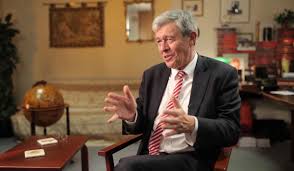
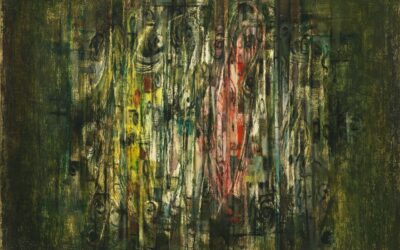
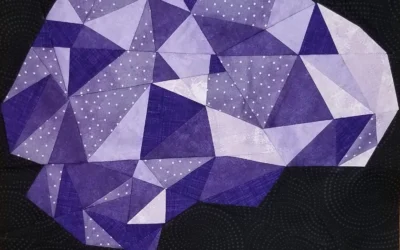


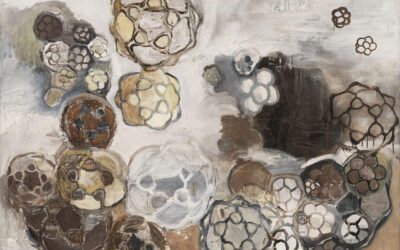


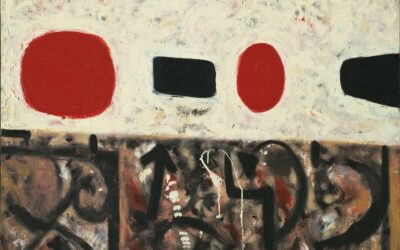
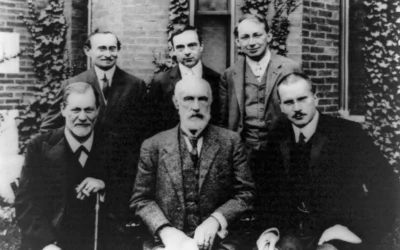

0 Comments